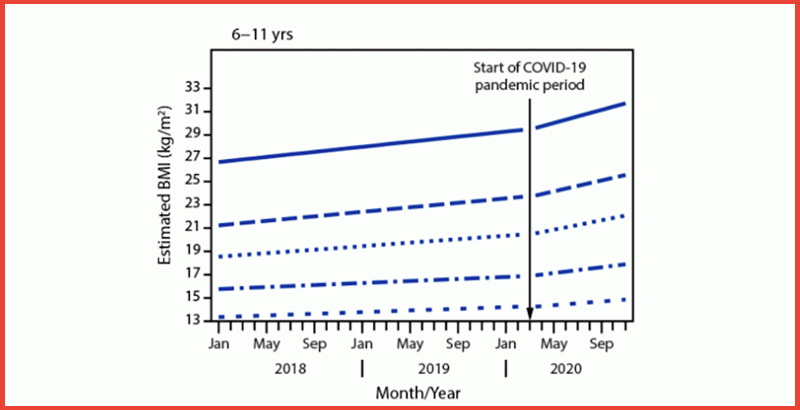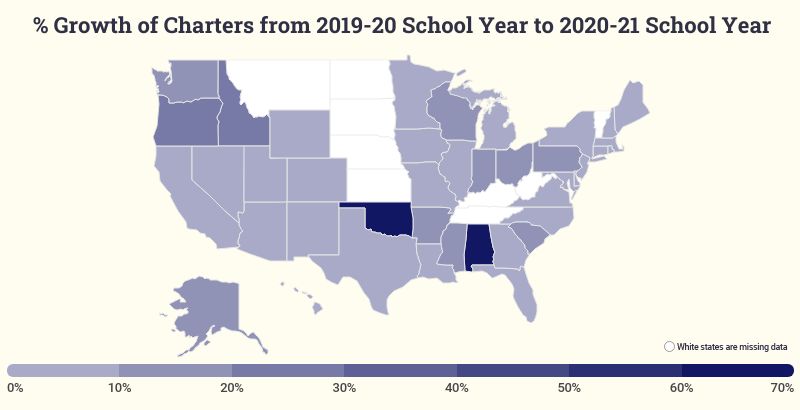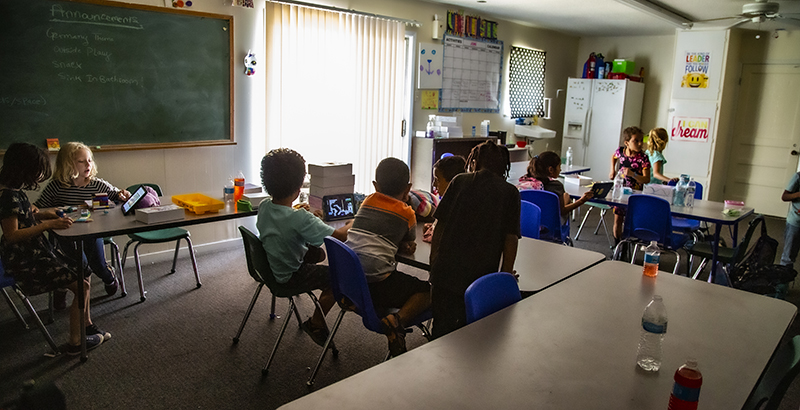Our 12 Best Education Articles in September: The Pandemic Reshapes Student Surveillance, Parents Decry Subpar Remote Learning, Booming Charter Enrollment & More
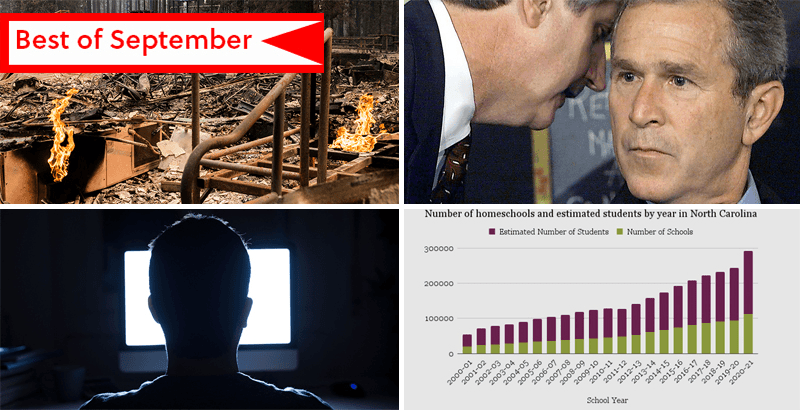
Get stories like these delivered straight to your inbox. Sign up for The 74 Newsletter
Leading up to the 2021 academic year, it became clear that just as educators and district leaders were pushing schools for a return back to “normal,” COVID-19 and the escalating Delta variant would force schools to endure a third year of disruption and improvisation. Many of our top stories this month focused on the fallout of closures and quarantines during the first days of the semester, and examined how the past 18 months of the pandemic have come to affect everything from school enrollment to student health and school surveillance.
Here were our most popular and important articles of the month:
Exclusive Data: An Inside Look at the Spy Tech That Followed Kids Home for Remote Learning — and Now Won’t Leave
Student Safety: When the pandemic forced Minneapolis students into remote learning, district officials partnered with Gaggle, a digital surveillance company that uses artificial intelligence and a team of content moderators to track the online behaviors of millions of kids across the U.S. every day. Now, public records obtained by The 74 offer an unprecedented look at how the Minneapolis school district deployed a controversial security tool that saw rapid national growth during the pandemic but carries significant civil rights and privacy concerns. The data highlight how Gaggle puts children under relentless digital surveillance long after classes end for the day. In Minneapolis, officials say the tool helps identify youth at risk of suicide. But some worry that rummaging through students’ personal files and conversations on their school-issued Google and Microsoft accounts could backfire. Read more by The 74’s Mark Keierleber.
—Backstory: How the Minneapolis School District is spending big on new student surveillance technology, raising ire after terminating police contract (Read more)
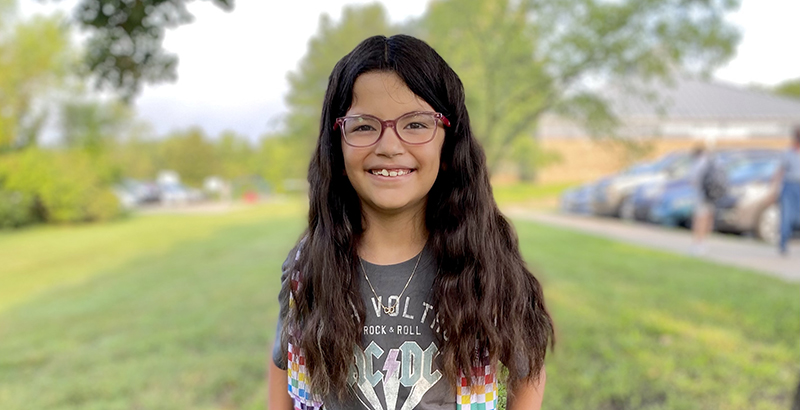
‘Everyone Had Their Heads in the Sand’: Push To Reopen Schools Leaves Many Quarantined Students Without Remote Learning Options
Learning Loss: The Delta variant is spoiling leaders’ best-laid plans for a full return to school, with some now shifting back to remote learning and others leaving families hanging over how their children will stay on track. Facing pressure from parents and the Biden administration to get students back in classrooms, state and district leaders, some argue, have now “overcorrected,” making it harder to give students in quarantine real-time access to instruction. States, such as Ohio and North Carolina are now considering policies that would bring back remote options, and some districts are tapping federal relief funds for online tutoring programs. But others, such as Texas lawmakers, want to limit virtual options only to higher-achieving students. It’s a reversal in some ways from where schools were a few months ago, fully intending to leave remote instruction behind. “I really can’t believe our schools are as unprepared for remote learning as they seem to be,” Robin Lake, director of the Center on Reinventing Public Education told reporter Linda Jacobson. “Everyone had their heads in the sand, and kids will pay the price.” Read the full article.
Four-Day Work Weeks, Big Signing Bonuses and Paid Moving Expenses: See How Districts Across the U.S. Are Luring Subs, Special Ed Teachers
Interactive — School Staffing: Districts nationwide are experiencing a shortage of special education and substitute teachers, exacerbated by the pandemic and rolling quarantines. So how are they addressing these challenges? From $15,000 bonuses in Detroit for special education teachers to four-day work weeks in a small Colorado district to extra pay on Mondays and Fridays for subs in Las Cruces, Texas, administrators and state governments are innovating to fill gaps and bring eligible educators into the classroom. Retirees are returning to work in Nevada and California, parents are being recruited for full-time positions in Georgia and college graduates in all fields are in high demand to support students returning to class and prevent school closures. Marianna McMurdock and Meghan Gallagher created interactive maps to show which recruitment and retention solutions are popping up nationally. See our full report.
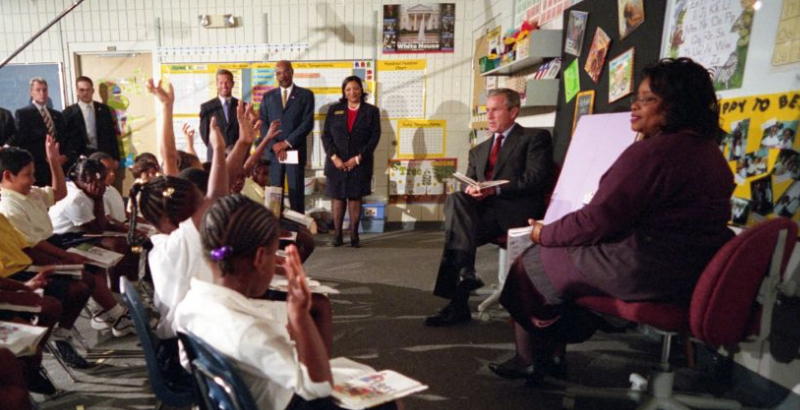
From Tragedy to Triumph to Failure: How 9/11 Helped Pass No Child Left Behind — And Fueled its Eventual Demise
20th Anniversary: Two decades have passed since the morning that changed America forever — a morning that found President George W. Bush in a Florida elementary school, reading with students and attempting to jump-start the passage of the No Child Left Behind Act. Within months of the terrorist attacks of 9/11, a collective sense of grief and purpose led the federal government to declare war on terrorism, even as it pledged to provide an excellent education for every child. But while it is generally acknowledged that Congress passed the landmark legislation partially as a demonstration of national unity, some believe the Bush administration’s emphasis on the global war on terror set back the mission of education reform, as attention waned and bipartisanship dissolved. “That whole sweet thing that was put together in the ’80s and came together in various states and then saw this incredible peak in Washington in 2001 — all of that largely fell apart because of 9/11, and the failure of everyone on all sides to hold it together in the wake of 9/11,” former Bush adviser Sandy Kress told The 74’s Kevin Mahnken. Read our full report.
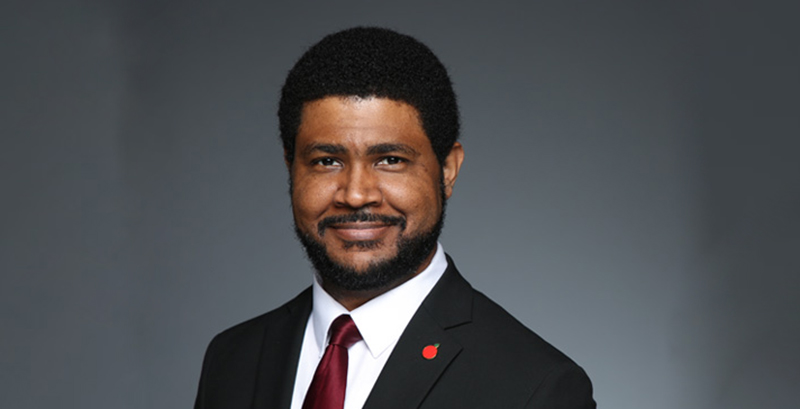
Schools Didn’t Plan for Online Classes This Year. Then Delta Struck, Demand Is Surging & Districts Are Scrambling for Virtual Options. Will They Be Good Enough?
Student Quarantines: As COVID-19 threatens a return to “normal” for a third academic year, the number of quality online schools is growing — but not as fast as the number of districts and charter school networks inking contracts with education technology companies to provide services ranging from digital curriculum to “turnkey online school systems.” Yes, mask and vaccine mandates and families’ reactions to the Delta variant’s surge are moving targets, say researchers, but unless education leaders make the quality of online instruction a priority, last year’s lackluster experience with remote learning is likely to repeat itself. Beth Hawkins has some background on why districts are again scrambling to provide online learning alternatives and what the new academic year might look like in places where school leaders started thinking about quality early on. Read our full report.
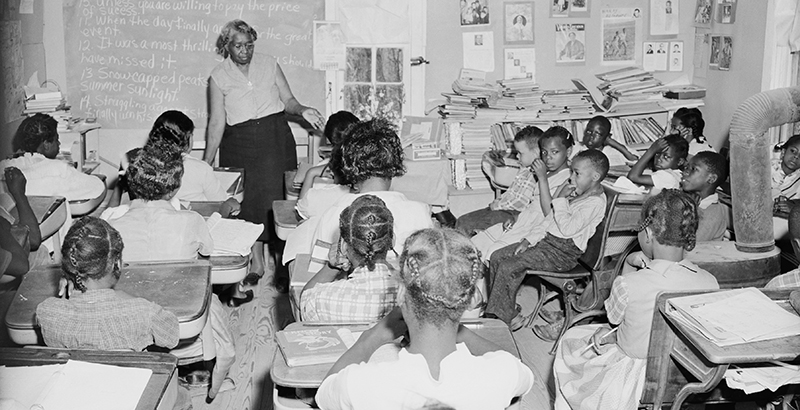
Critical Race Theory and the New ‘Massive Resistance’
Curriculum: Arnold Ambers was still a teenager himself when he woke up early each morning and drove a school bus that took local children to a nearby segregated elementary school. Then, he arrived late to his own segregated high school classroom despite a U.S. Supreme Court ruling that found such isolation unconstitutional years earlier. Growing up in the Jim Crow South, Ambers experienced first hand how many white Americans fought tooth and nail to stop integration, a movement that became known as “massive resistance.” These days he’s on edge as racial strife engulfs the country and the community of his childhood — Loudoun County, Virginia — has become ground zero for a national uproar over how schools teach about America’s racist past, opposition to the catch-all and now-ubiquitous phrase critical race theory. “It’s painful to realize that we’ve come a long way, but in the last five years we’ve really gone backwards quite a bit,” Ambers said. “And I guess the painful reality is that racism has always been there.” The 74’s Mark Keierleber explores the historical connections between education in America post-Brown v. Board and the current controversy, a showdown one Loudoun County official called “the massive resistance of our generation.” Read the full feature.
‘Staggering’: New Research Shows that Child Obesity Has Soared During Pandemic
Student Health: Since COVID-19 first shuttered schools last spring, K-12 students have been subjected to a kind of natural experiment in inactivity, with exercise and time spent outdoors declining as screen use has skyrocketed. Now, the physical effects are becoming clear: According to a study released by the Centers for Disease Control and Prevention, children’s body mass index (a common measure of weight relative to height) increased twice as fast during the early months of the pandemic as it had previously. The findings match the results of several existing studies, all of which have found that kids are increasingly overweight or obese as they’ve been largely confined to home. Dietitian Michelle Demeule-Hayes, the director of a clinical weight-loss program at Baltimore’s Mt. Washington Pediatric Hospital, called the trends “staggering”: “It’s never been this bad,” she told The 74’s Kevin Mahnken. “So the research is definitely accurate.” Read our full report.
As the Pandemic Set In, Charter Schools Saw Their Highest Enrollment Growth Since 2015, 42-State Analysis Shows
Enrollment: Charter schools experienced more growth in 2020-21 — the first full year of the pandemic— than they’ve seen in the past six years, according to preliminary data released today from the National Alliance for Public Charter Schools. While traditional public schools saw sharp declines in enrollment during the tumultuous year, charters in 39 states saw an influx of 240,000 new students — a 7 percent increase over last year. “Families are sending a clear message. They want more public school options,” Nina Rees, president and CEO of the alliance, told The 74’s Linda Jacobson. Those options include virtual schools, which in Oklahoma accounted for much of the state’s nearly 78 percent growth in charter enrollment. While it’s too soon to tell whether the enrollment shifts will last, the Fordham Institute’s Michael Petrilli suspects many of the families who opted for virtual charters will find their way back to district schools — “once things return to ‘normal,’ whatever the heck that is.” Read the full story.
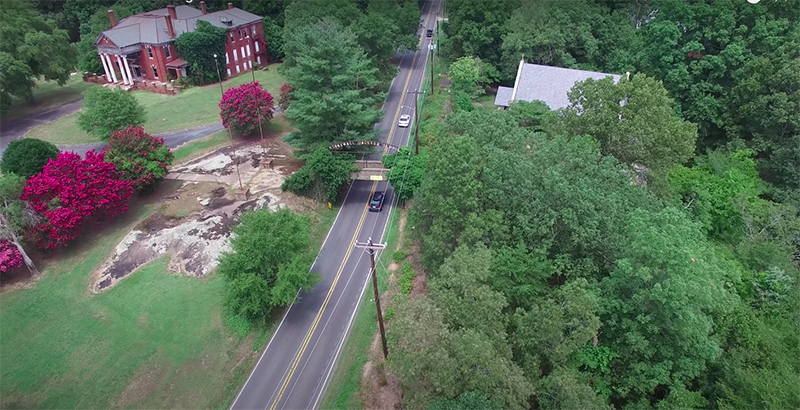
‘Something Was Missing’: 97% of North Carolina Survey Respondents Never Taught About State’s Grim Eugenics History
History: Down the road from Joseph Palko’s North Carolina high school stood a spooky, deserted old campus. Classmates would sneak onto the grounds and scare each other with ghost stories about the run-down buildings. His curiosity piqued, Palko turned to the internet for answers and quickly learned that six teenage boys at the reform school — some as young as 14 — had been ordered to undergo vasectomies by the state’s eugenics board in 1948. “That was really shocking,” Palko told The 74. “It’s scarier than anything anyone said was going on.” On further investigation, he found that from 1929 to 1974, the state sterilized over 7,600 people in an effort to weed out so-called “feeblemindedness.” But Palko, like the vast majority of North Carolinians, was never taught about the state’s eugenics past — and its later, overt targeting of poor, Black women. Previous reporting from The 74 uncovered that, despite a 2003 state-level directive that eugenics history be included in North Carolina’s K-12 curricula, none of the state’s 10 largest districts require that students learn about the tragic episode. Now, responses from 175 individuals to a reader survey by The 74 help quantify the impact of those untaught lessons. Read what we found.
—Genocide ‘In My Own Backyard’: North Carolina educators ignored state’s eugenics history long before critical race theory pushback (Read more)
With Up to 9 Grade Levels Per Class, Can Schools Handle the Fallout From COVID’s K-Shaped Recession?
Achievement Gaps: Wealthy newcomers from expensive cities like New York and San Francisco propelled housing prices in Austin, Texas, into the stratosphere in 2020, pushing out families of modest means and sending demographic shockwaves through the area’s schools. It’s just one manifestation of the pandemic’s K-shaped recession, a downturn barely felt by the affluent people at the top of the K but devastating to the people at the bottom. As schools prepared to reopen in August, research showed COVID has put the most disadvantaged students even further behind while propelling privileged children ahead and hollowing out the middle. Meaning the span of academic mastery in individual classrooms — seven grade levels in “normal” times — is likely to widen even further, to as many as nine grade levels. In this installment of The 74’s series examining the link between the pandemic’s economic turmoil and challenges in classrooms, Beth Hawkins takes you inside an Austin school that’s poised to meet the needs of its “bookend students” — the kids furthest ahead and behind — and may be a model for addressing the COVID classroom crisis. Read the full feature.
—Explore Our Special Report: After a K-shaped recession, how will America’s schools avert a COVID classroom crisis? (Read more)

Homeschooling Is on the Rise. What Should That Teach Education Leaders About Families’ Preferences?
Analysis: With school closures, student quarantines and tensions over mask requirements, vaccine mandates and culture war issues, families’ lives have been upended in ways few could have imagined 18 months ago. That schools have struggled to adapt is understandable, writes contributor Alex Spurrier. But for millions of families, their willingness to tolerate institutional sclerosis in their children’s education is wearing thin. Over the past 18 months, the rate of families moving their children to a new school increased by about 50 percent, and some 1.2 million switched to homeschooling last academic year. Instead of working to get schools back to a pre-pandemic normal, Spurrier says, education leaders should look at addressing the needs of underserved kids and families — and the best way to understand where schools are falling short is to look at how families are voting with their feet. If options like homeschooling, pods and microschools retain some of their pandemic enrollment gains, it could have ripple effects on funding that resonate throughout the K-12 landscape. Read our full report.
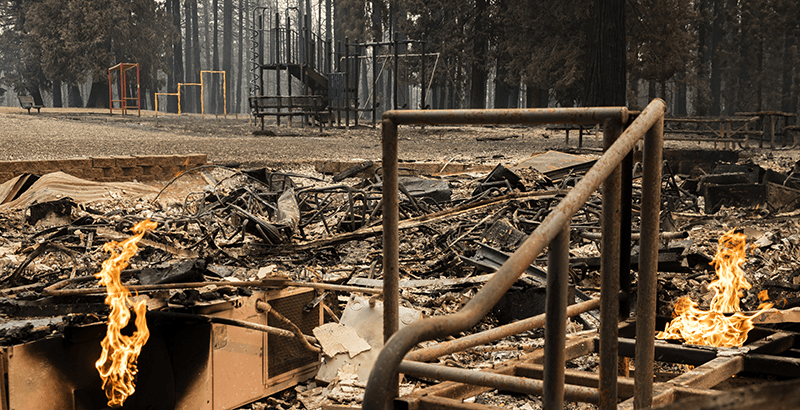
When Climate Change Forces Schools to Close: Fires, Storms and Heatwaves Have Already Kept 1 Million Students Out of Classrooms This Semester
Photo Essay: An elementary school burned to the ground as wildfires scorched Northern California. In New Jersey, a tornado destroyed a high school’s stadium. Floods from multiple hurricanes and historic storm systems damaged or destroyed school buildings, paralyzed campuses and, in Louisiana, have forced 45,000 students out of classrooms until October. Twenty schools in Columbus, Ohio, had to start remotely because of excessive heat. And just this month, as Hurricane Nicholas shuttered schools in Texas, a mid-September heat wave forced Baltimore to shorten school days for lack of air conditioners. In a third school year already complicated by COVID, as in-person learning resumes, in fits and starts, for the first time in 18 months, extreme weather exacerbated by climate change has led to closures affecting more than 1 million students across the country. The 74’s Meghan Gallagher looks back at the disruptions from the first month of the school year and offers a snapshot of the chaos and obstacles that one California superintendent dubbed the new normal. See our full gallery.
Go Deeper: Get essential education news and commentary delivered straight to your inbox. Sign up here for The 74’s daily newsletter.
Get stories like these delivered straight to your inbox. Sign up for The 74 Newsletter



